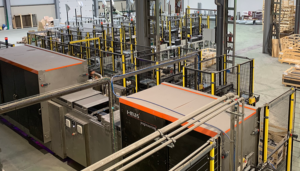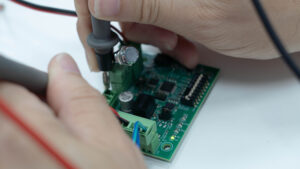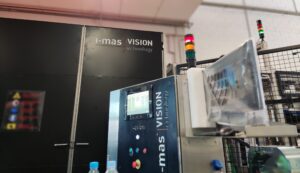Hyperspectral vision is emerging as a key technology within the framework of Industry 4.0, providing much more advanced inspection capabilities than traditional machine vision systems. This technology makes it possible to analyze the composition of materials in detail and detect defects invisible to the human eye or to conventional RGB cameras.
Its integration as part of the smart manufacturing ecosystem improves traceability, product quality and real-time decision making.
From image to data: the potential of hyperspectral imaging
Hyperspectral vision captures information in hundreds of bands of the electromagnetic spectrum, making it possible not only to see the shape or color of an object, but also to identify its chemical or molecular composition. This opens up entirely new possibilities for contaminant detection, mixture control, material authentication and degradation monitoring.
When applied to industry, this technology allows a shift from visual control to automated spectral analysis, which is particularly useful in sectors such as food, pharmaceuticals, automotive or composite materials manufacturing.
Hyperspectral imaging and industrial connectivity
One of the pillars of Industry 4.0 is the interconnection between machines, sensors and IT systems. In this sense, hyperspectral vision systems not only capture rich and detailed information, but can also be integrated with MES, SCADA or ERP platforms to provide real-time data to the entire production process.
The combination of spectral analysis, artificial intelligence and IoT connectivity makes it possible to generate automatic alerts, adjust production parameters or sort products intelligently without the need for human intervention.
Strategic benefits for the industry
The adoption of hyperspectral vision is not only a technical improvement, but a lever to optimize the entire production system. Its main advantages include:
- Increased quality of the final product, by detecting invisible defects or cross-contamination.
- Reduced scrap and rework, thanks to earlier and more accurate inspection.
- Full traceability by linking each inspection to the lot or reference produced.
- Advanced automation, combining vision with artificial intelligence and actuators.
Moreover, as a non-invasive, non-contact technology, it is ideal for environments where hygiene or product integrity is critical.
Keys to successful implementation
Incorporating hyperspectral vision requires careful planning. It is not enough to install a camera: it is necessary to integrate optics, lighting, spectral interpretation software and, above all, to define what you want to detect and with what level of sensitivity.
The process can start with a feasibility study or proof of concept, where real samples are analyzed to evaluate the expected return.
Hyperspectral vision as a competitive advantage
In the era of smart manufacturing, where data is the new strategic asset, hyperspectral vision represents a valuable source of information that has so far been unexplored by many companies. Its implementation allows a further step towards error-free production, with more robust processes and the ability to adapt quickly to changes in the market or in regulations.
Integrating this technology can be the differentiating factor for companies seeking to position themselves as leaders in quality, innovation and process control. In short, a key piece in the digital strategy of any industry that aspires to be smarter.
Hyperspectral vision at i-mas
In the engineering department of i-mas we are specialized in the combination of artificial vision technologies, deep learning and industrial automation in production processes, which allows us to offer integral solutions adapted to the specific needs of each client.
Want to learn more about our services? Contact us or visit our projects section!



